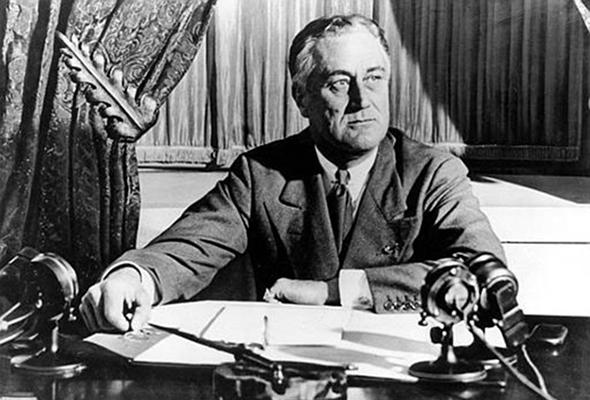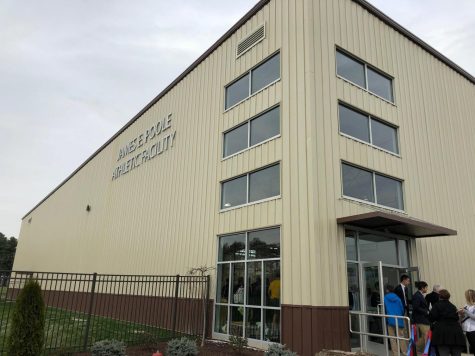FDR, the Embodiment of Perseverance

October 27, 2014
We all like to believe we know who Franklin D. Roosevelt was, both as a man and a President. We know of his accomplishments, the times when he led America out of its worst economic crisis yet and then into the fray of the most horrific conflict the world has ever seen. As members of the Albany Academy, we might even know of his governorship of New York, since he laid the cornerstone of the building we roam today. But to gain a better understanding of who FDR truly was and what we can learn from him, we have to look past that and analyze every aspect of FDR’s life and career.
I recently went to Hyde Park, the location of FDR’s home, simply as part of a history project. But once I toured the entire grounds of Springwood and the Presidential Library, I was profoundly impacted by what I observed and experienced. The one ideal that really seemed to stand out was FDR’s tenacity. This was evident during his first term as President. Inheriting a nation mired in depression and succeeding a president who was too cautious to intervene, FDR chose to act immediately and overwhelmingly. During his term, he created dozens of new regulations and federal agencies that would later become known collectively as the New Deal. What distinguished him was his willingness to act; he believed that “It is common sense to take a method and try it. If it fails, admit it frankly and try another. But above all, try something.” And he did have his failures: sometimes it was the overlapping jurisdictions of newly formed agencies that created confusion, and other times it was the opposition of conservative justices who overthrew some of his systems. However, he kept at it and pulled the nation through its toughest economic disaster.
Another, more private aspect of FDR’s life that was one of his greatest challenges was polio. Polio struck FDR in the prime of his political career. Because physical disabilities were often seen as equal to mental disabilities in the early 20th century, his eventual rise to become one of the nation’s greatest Presidents is even more commendable. Unfortunately, what we remember are the end results of his efforts, not the means he used to get to that point. FDR’s struggle to live with polio is, in my opinion, a more powerful example of perseverance than his political achievements. At the age of only 39, FDR suddenly found himself unable to walk without aid because of the disease. FDR’s perseverance was first tested when it was discovered that his illness could not be cured. Others may have fallen into depression, or at the very least would have abandoned their political careers. However, as noted in the Presidential Library, “[FDR] never overcame polio. But he never allowed the polio overcome him.” He learned how to adjust his living environment to overcome his physical limitation; for instance, throughout FDR’s home, there are a plethora of ramps and handrails, and even a manually-activated elevator that he himself operated. Although he couldn’t change the public’s perception of his disability, he distanced it as far from the forefront of people’s minds as possible. Instead of appearing in a wheelchair or on crutches in public, he used what was known as a two-point walk; he would hold a cane in one hand and a man would support his other arm while he “walked” to a podium.
All of this and more can be witnessed throughout Springwood and the Presidential Library. His efforts to solve problems with both tact and bluntness, his willingness to act, and, most of all, his steady perseverance are only a few of many exemplary characteristics that we can adopt and live by. The site was built to educate future generations of both his great achievements and critical blunders. I strongly encourage everyone at the Academy to visit the national historic site, not because you can learn more about his political and social accomplishments, but because you will be inspired to live your life with one of our most important core values, perseverance.




